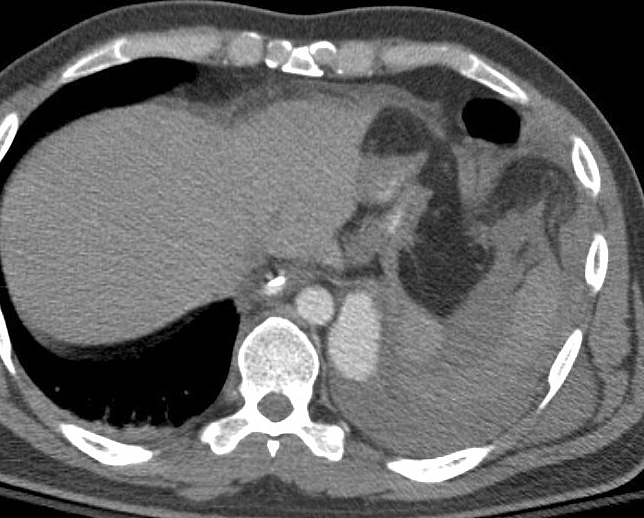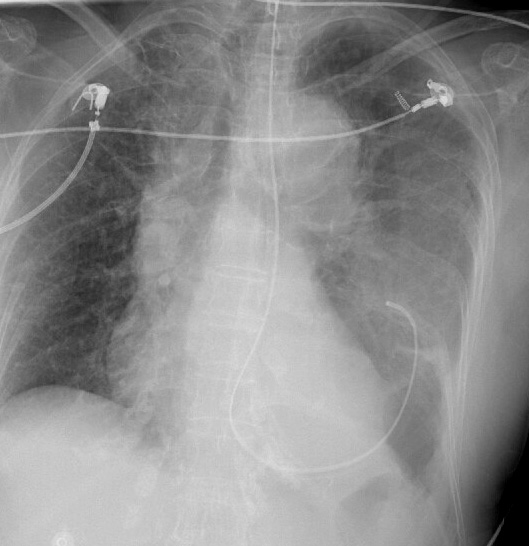[1]
Vester MEM, Bilo RAC, Loeve AJ, van Rijn RR, van Zandwijk JP. Modeling of inflicted head injury by shaking trauma in children: what can we learn? : Part I: A systematic review of animal models. Forensic science, medicine, and pathology. 2019 Sep:15(3):408-422. doi: 10.1007/s12024-019-0082-3. Epub 2019 Mar 4
[PubMed PMID: 30828765]
Level 3 (low-level) evidence
[2]
Morley EJ, English B, Cohen DB, Paolo WF, Nusbaum J, Gupta N. Points & Pearls: Blunt cardiac injury: emergency department diagnosis and management. Emergency medicine practice. 2019 Mar 1:21(Suppl 3):1-2
[PubMed PMID: 30821949]
[3]
Morley EJ, English B, Cohen DB, Paolo WF. Blunt cardiac injury: emergency department diagnosis and management. Emergency medicine practice. 2019 Mar:21(3):1-20
[PubMed PMID: 30794369]
[4]
Gentile S, Kneubuehl BP, Barrera V, Dobay A, Thali MJ, Bolliger SA. Fracture energy threshold in parry injuries due to sharp and blunt force. International journal of legal medicine. 2019 Sep:133(5):1429-1435. doi: 10.1007/s00414-019-02022-3. Epub 2019 Feb 21
[PubMed PMID: 30788564]
[5]
Brooks T, Choi JE, Garnich M, Hammer N, Waddell JN, Duncan W, Jermy M. Finite element models and material data for analysis of infant head impacts. Heliyon. 2018 Dec:4(12):e01010. doi: 10.1016/j.heliyon.2018.e01010. Epub 2018 Dec 8
[PubMed PMID: 30582038]
[6]
O'Toole JE, Kaiser MG, Anderson PA, Arnold PM, Chi JH, Dailey AT, Dhall SS, Eichholz KM, Harrop JS, Hoh DJ, Qureshi S, Rabb CH, Raksin PB. Congress of Neurological Surgeons Systematic Review and Evidence-Based Guidelines on the Evaluation and Treatment of Patients with Thoracolumbar Spine Trauma: Executive Summary. Neurosurgery. 2019 Jan 1:84(1):2-6. doi: 10.1093/neuros/nyy394. Epub
[PubMed PMID: 30202985]
Level 1 (high-level) evidence
[7]
Sears BW, Luchette FA, Esposito TJ, Dickson EL, Grant M, Santaniello JM, Jodlowski CR, Davis KA, Poulakidas SJ, Gamelli RL. Old fashion clinical judgment in the era of protocols: is mandatory chest X-ray necessary in injured patients? The Journal of trauma. 2005 Aug:59(2):324-30; discussion 330-2
[PubMed PMID: 16294071]
[8]
Kanz KG, Sturm JA, Mutschler W. [Algorithm for prehospital blunt trauma management]. Der Unfallchirurg. 2002 Nov:105(11):1007-14
[PubMed PMID: 12402127]
[9]
Lee JK, Brady KM, Deutsch N. The Anesthesiologist's Role in Treating Abusive Head Trauma. Anesthesia and analgesia. 2016 Jun:122(6):1971-82. doi: 10.1213/ANE.0000000000001298. Epub
[PubMed PMID: 27195639]
[10]
Stassen NA, Bhullar I, Cheng JD, Crandall M, Friese R, Guillamondegui O, Jawa R, Maung A, Rohs TJ Jr, Sangosanya A, Schuster K, Seamon M, Tchorz KM, Zarzuar BL, Kerwin A, Eastern Association for the Surgery of Trauma. Nonoperative management of blunt hepatic injury: an Eastern Association for the Surgery of Trauma practice management guideline. The journal of trauma and acute care surgery. 2012 Nov:73(5 Suppl 4):S288-93. doi: 10.1097/TA.0b013e318270160d. Epub
[PubMed PMID: 23114483]
[11]
Schoenfeld AJ, Lehman RA Jr, Hsu JR. Evaluation and management of combat-related spinal injuries: a review based on recent experiences. The spine journal : official journal of the North American Spine Society. 2012 Sep:12(9):817-23. doi: 10.1016/j.spinee.2011.04.028. Epub 2011 Jun 2
[PubMed PMID: 21640658]
[12]
Fakhry SM, Trask AL, Waller MA, Watts DD, IRTC Neurotrauma Task Force. Management of brain-injured patients by an evidence-based medicine protocol improves outcomes and decreases hospital charges. The Journal of trauma. 2004 Mar:56(3):492-9; discussion 499-500
[PubMed PMID: 15128118]
[13]
Yeung LL, McDonald AA, Como JJ, Robinson B, Knight J, Person MA, Lee JK, Dahm P. Management of blunt force bladder injuries: A practice management guideline from the Eastern Association for the Surgery of Trauma. The journal of trauma and acute care surgery. 2019 Feb:86(2):326-336. doi: 10.1097/TA.0000000000002132. Epub
[PubMed PMID: 30489505]
[14]
Keane M. Triad of death: the importance of temperature monitoring in trauma patients. Emergency nurse : the journal of the RCN Accident and Emergency Nursing Association. 2016 Sep:24(5):19-23. doi: 10.7748/en.2016.e1569. Epub
[PubMed PMID: 27615346]
[15]
Alhelali I, Stewart TC, Foster J, Alharfi IM, Ranger A, Daoud H, Fraser DD. Basal skull fractures are associated with mortality in pediatric severe traumatic brain injury. The journal of trauma and acute care surgery. 2015 Jun:78(6):1155-61. doi: 10.1097/TA.0000000000000662. Epub
[PubMed PMID: 26151517]



